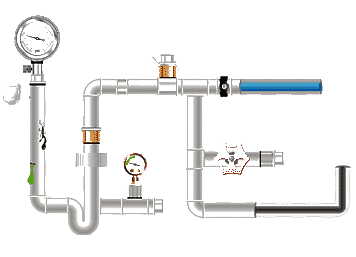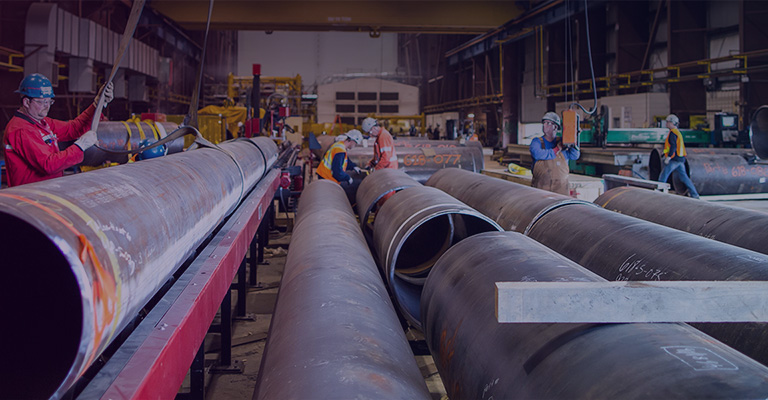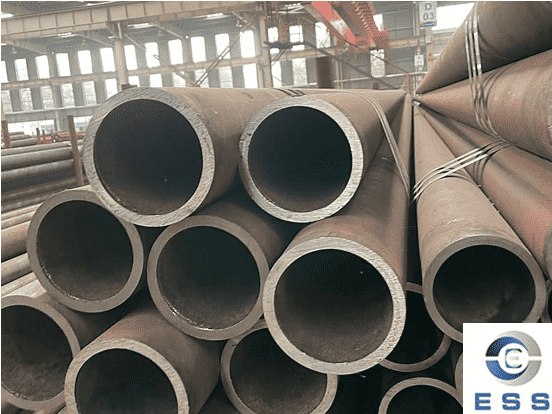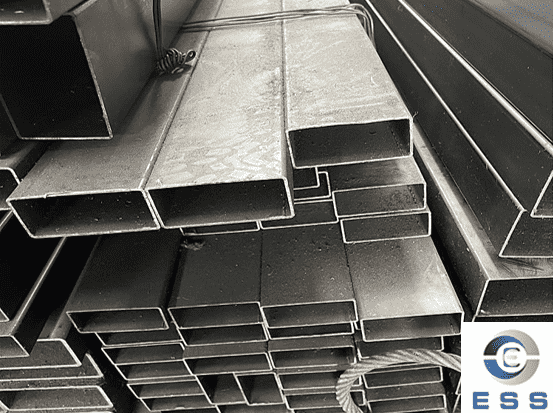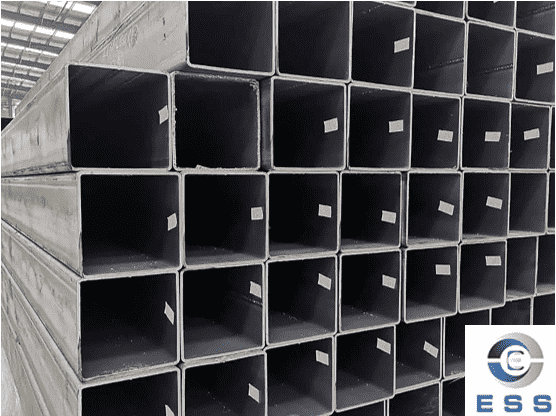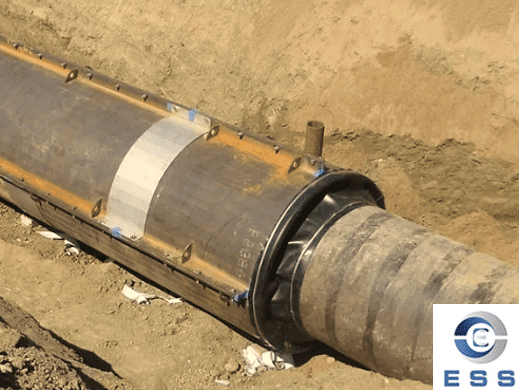
The Difference Between One-Piece and
Split Steel Casing Pipe
Steel casing pipe is a type of pipe
material, typically made from seamless
steel pipe and generally conforming to the API SPEC 5CT international standard. It offers excellent high-temperature and pressure
resistance and is widely used in the petroleum, chemical, geological,
metallurgical, and construction industries. One-piece and split casing pipe are
two common types of casing pipe, with significant differences in design,
installation, use, and maintenance.
What is One-Piece Steel Casing Pipe?
One-piece steel casing pipe is manufactured
from a single piece of steel, without any joints or segments. It features
strong integrity and excellent sealing properties, and is often used in
projects requiring high safety, waterproofing, and fire resistance.
What is Split Steel Casing Pipe?
Split steel casing pipe is made from two or
more sections of steel, joined together by welding or bolting. It is often used
for pipeline repair and reinforcement by cutting the steel pipe in half
horizontally and then reconnecting it by welding or bolting. Features include
easy connection and installation, and customizable lengths and diameters.
Main Differences Between One-Piece and
Split Steel Casing Pipes
1. Design Differences
Structure of One-Piece Steel Casing Pipes
Its design features a monolithic structure,
meaning all casing pipe components are pre-assembled to form a complete unit.
This design makes the casing pipe more stable and capable of withstanding
greater pressure and loads.
Structure of Split Steel Casing Pipes
Its design is relatively flexible,
consisting of multiple components. This design facilitates customization and
installation based on specific needs, as well as partial replacement in the
event of damage.
2. Differences in Strength and Sealing
Performance
Performance of One-Piece Steel Casing Pipes
High strength, good integrity, and uniform
load distribution. Since there are no joints, the casing pipe offers superior
sealing, impermeability, and corrosion resistance. It is suitable for
high-pressure or high-intensity applications.
Performance of Split Steel Casing Pipes
Joints can become weak links, making them
more susceptible to leakage or loosening over time. Sealing relies on welding
or sealing rings, making it slightly less reliable than one-piece casing pipes.
3. Differences in Usage and Maintenance
Usage and Maintenance of One-Piece Steel
Casing Pipe
Due to its stable structure, the failure
rate during use is relatively low, and maintenance requirements are minimal.
However, when repairs are needed, the entire unit may need to be replaced,
which is costly.
Usage and Maintenance of Split Steel Casing
Pipe
Although its structure is relatively
complex, if a part is damaged, only the damaged part can be replaced, reducing
repair costs. Furthermore, its flexible design makes it easier to adapt and
upgrade.
4. Comparison of Installation Methods
Installation of One-Piece Steel Casing Pipe
Due to its integrated design, the
installation process is relatively simple. Simply place the entire casing pipe
unit in the designated location and secure it. This installation method saves
time and reduces potential installation errors.
Installation of Split Steel Casing Pipe
The installation process is relatively
complex, requiring each unit to be installed separately before assembly. While
this increases the number of installation steps, it also provides greater
flexibility and adaptability to a wider range of installation environments.
5. Differences in Application Scenarios
Applications of One-Piece Steel Casing Pipe
Its application is primarily used in new
construction projects, particularly where high strength, waterproofing, fire
resistance, and corrosion resistance are required.
For example: underground pipe corridors,
fire protection pipe wall penetrations, nuclear power plants, petrochemical
plants, and other critical facilities.
Applications of Split Steel Casing Pipe
It is primarily used in renovation projects
or construction environments with limited space, suitable for situations where
a full-length casing pipe is not feasible.
For example: pipeline reinforcement in
older buildings, local repairs, and reinforcement during pipe replacement.
6. Cost Differences
The Cost of One-Piece Steel Casing Pipe
The manufacturing process requires a high
level of precision and is relatively high in cost.
The Cost of Split Steel Casing Pipe
The process is more flexible, with lower
processing and transportation costs, but ongoing maintenance costs may be
higher.
How to Choose the Right Steel Casing
pipe?
1. For new construction, one-piece steel
casing pipe is recommended because it offers greater strength and sealing,
ensuring long-term stable system operation.
2. For renovations of older pipelines or in
space-constrained environments, split steel casing pipe is more convenient to
install and offers more flexible processing.
Summary
In general, one-piece and split steel
casing pipe each have their advantages and applicable scenarios. The integrated
casing pipe offers a stable design and easy installation, making it suitable
for applications requiring high stability. The split casing pipe, on the other
hand, is more suitable for complex and changing environments due to its
flexibility and ease of maintenance. When choosing between the two, consider
the trade-offs based on your specific needs and conditions.
Read more: Steel Casing Pipe Size Chart or Steel Casing Pipe Weight Chart









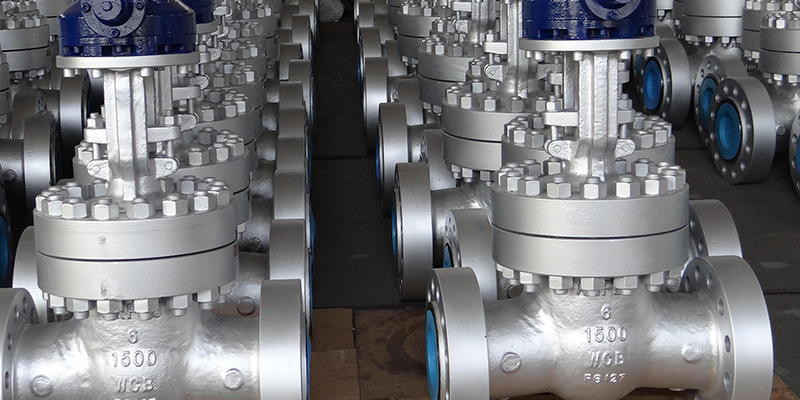
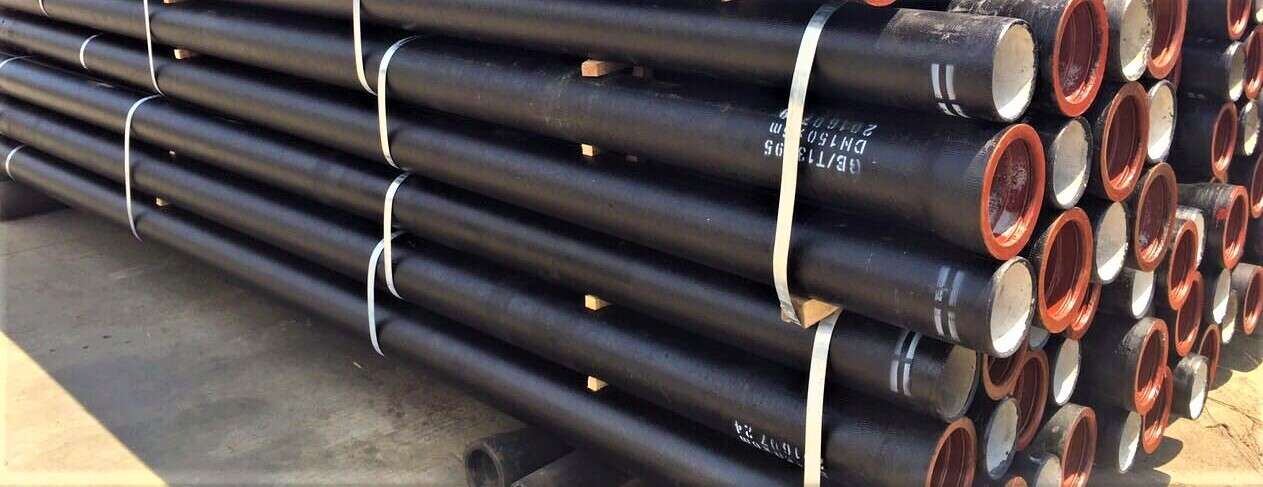


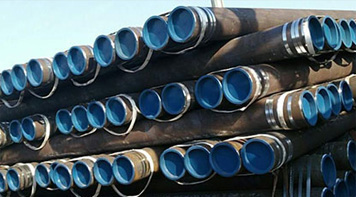 Eastern Steel Manufacturing Co.,Ltd not only improve product production and sales services, but also provide additional value-added services. As long as you need, we can complete your specific needs together.
Eastern Steel Manufacturing Co.,Ltd not only improve product production and sales services, but also provide additional value-added services. As long as you need, we can complete your specific needs together.
